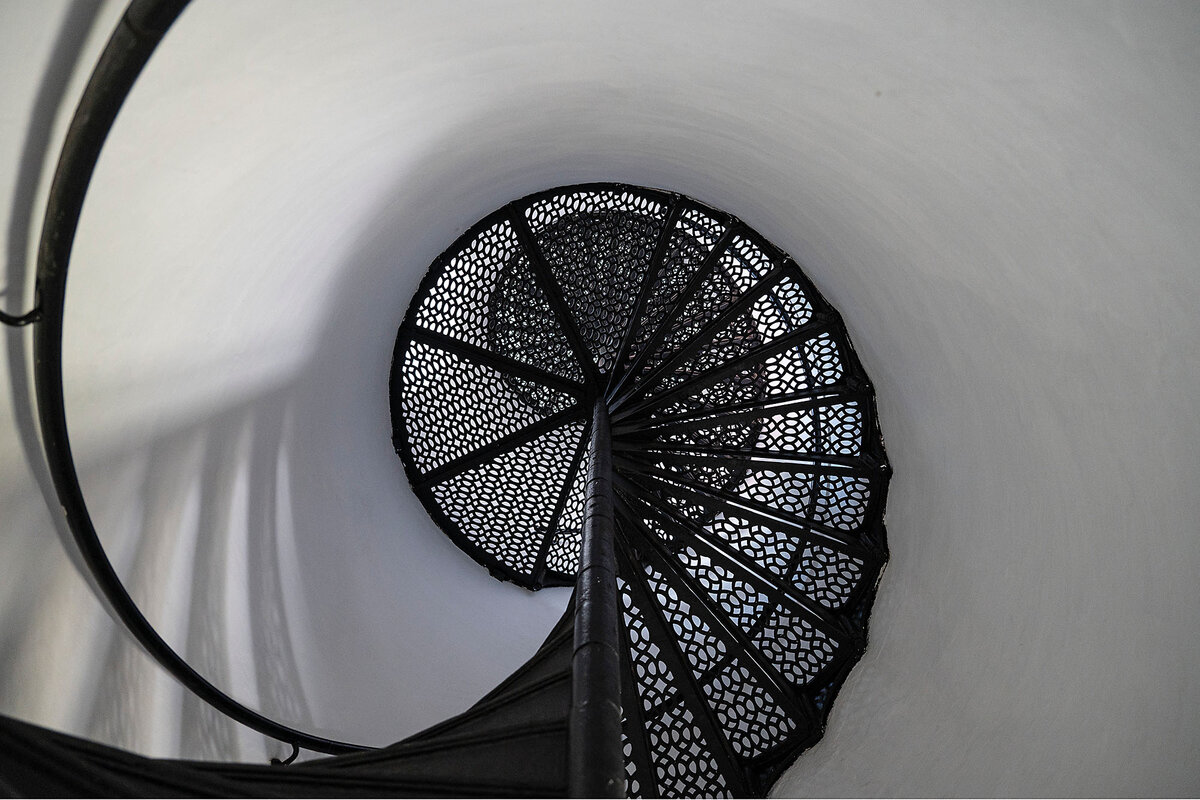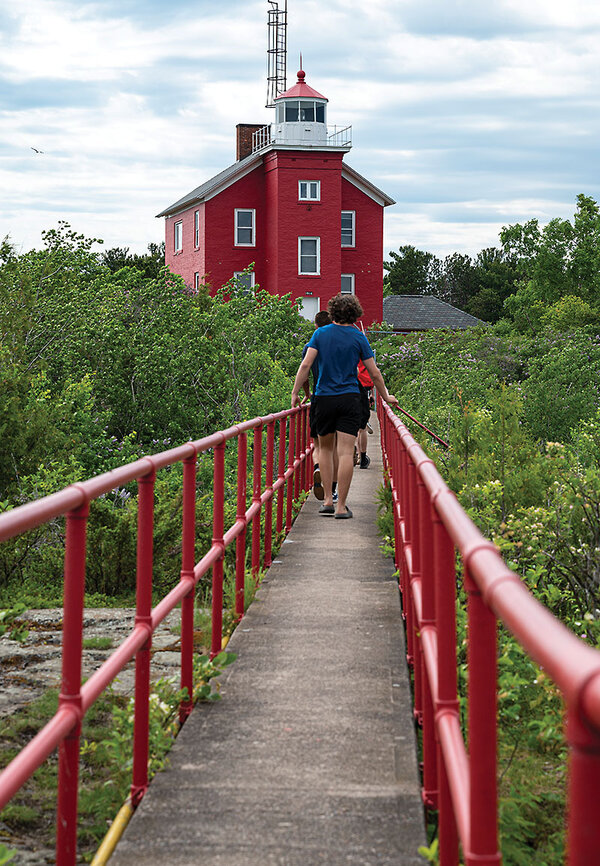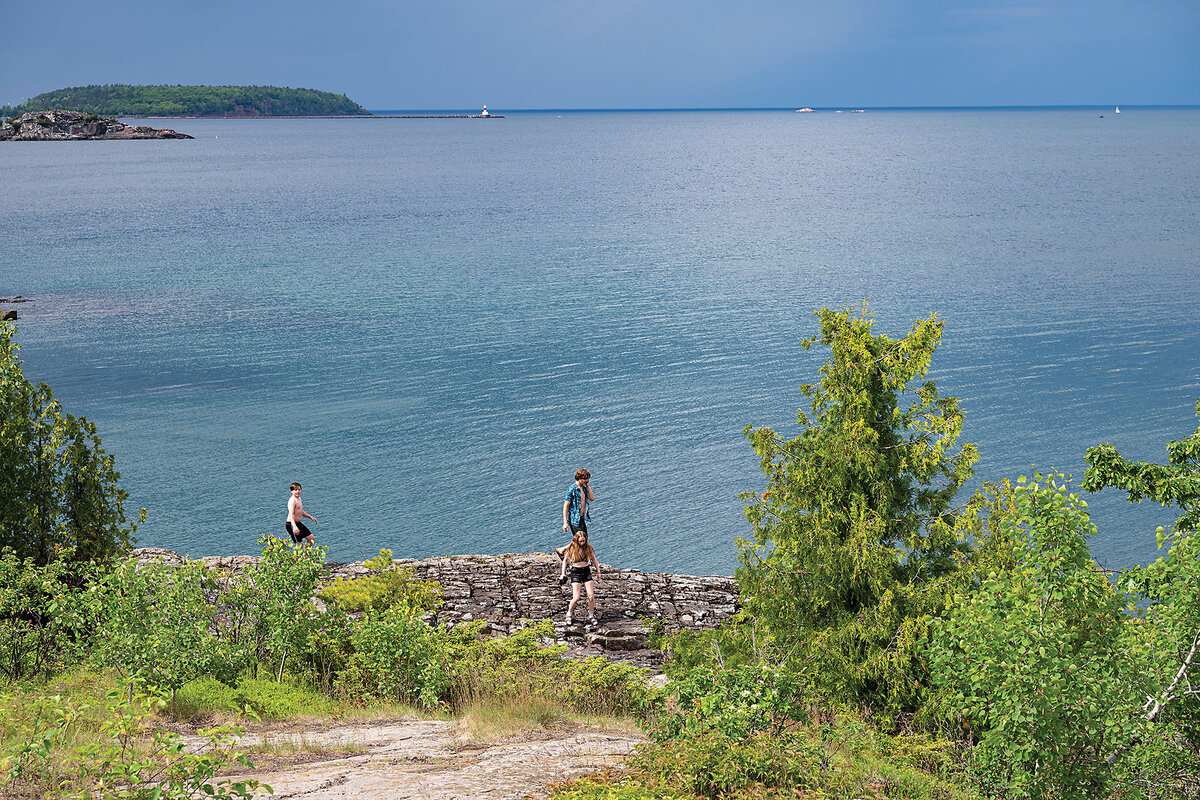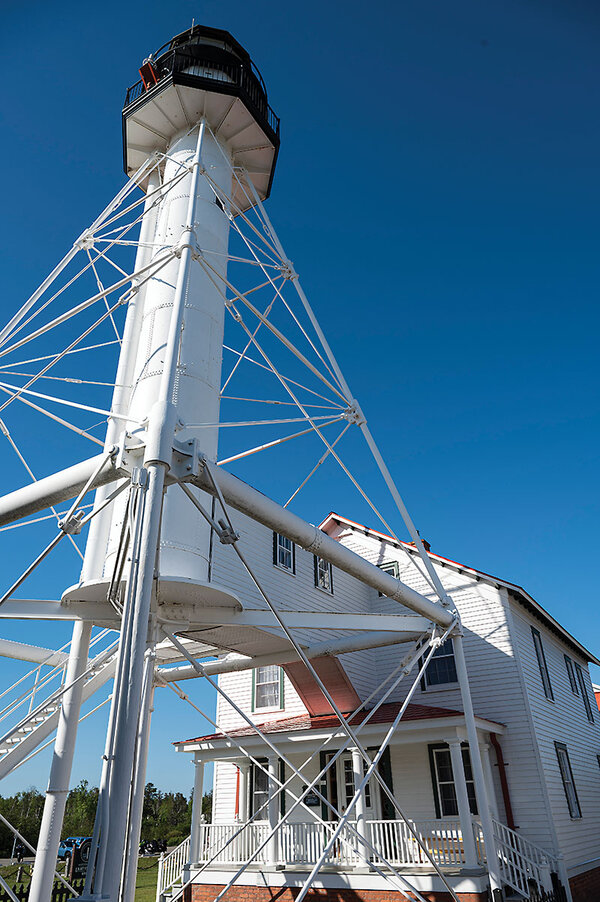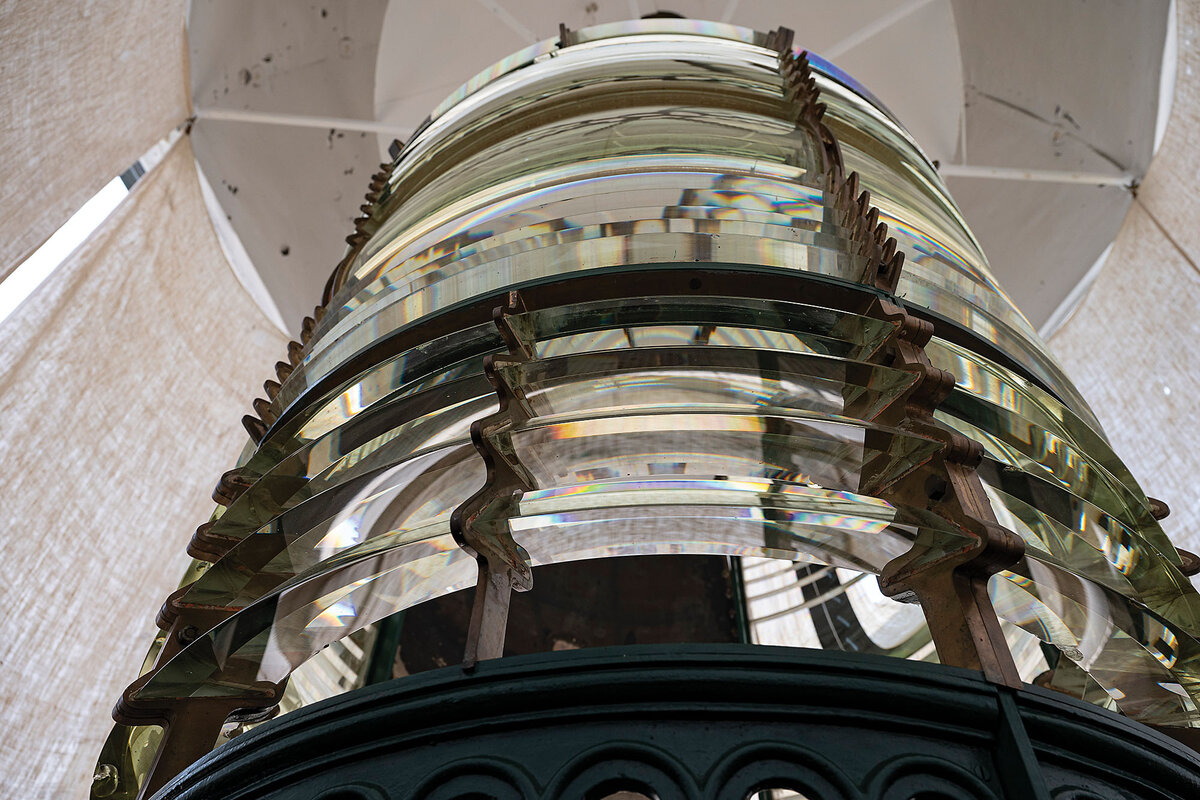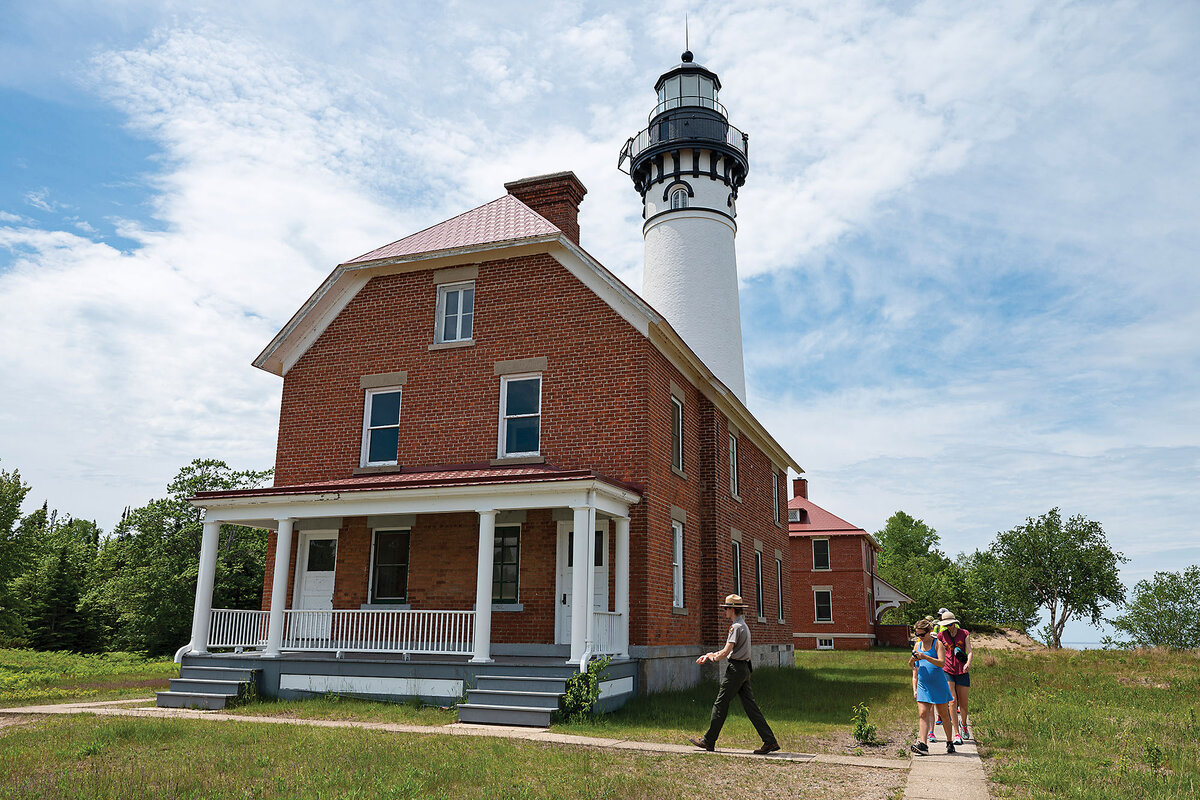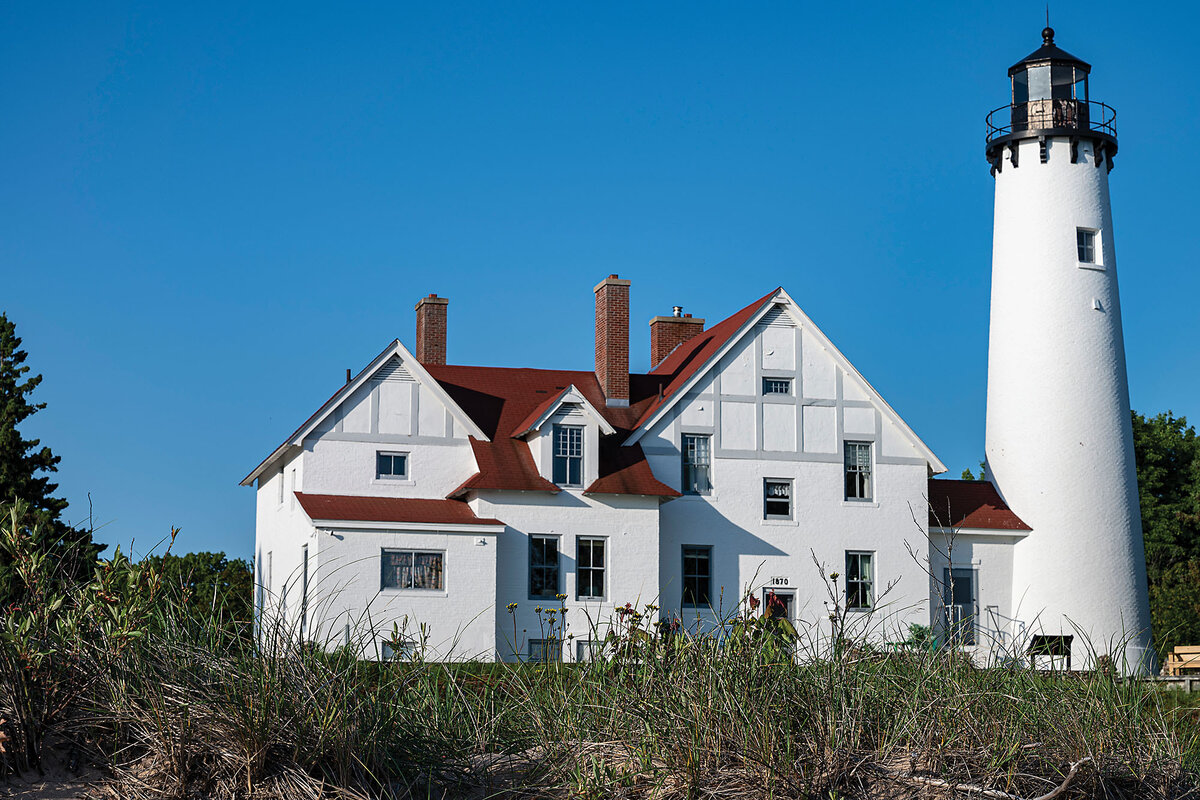The lighthouses of Michigan’s Upper Peninsula are beacons of history
Loading...
| Whitefish Point, Mich.
Across Michigan’s wild and sparsely populated Upper Peninsula, gas stations and grocery stores are difficult to come by. Lighthouses, however, are everywhere.
The largest and deepest of the Great Lakes, Lake Superior is also the world’s largest lake by surface area. After French explorers reached the Great Lakes region in the early 1600s, word traveled back to Europe about a “great northern sea” – the uppermost lake that soon earned the name Lake Superior. Europeans and early American Colonists began using it for fur trading and, later, to transport mined copper and iron.
In the second half of the 19th century, lighthouses were erected along Lake Superior’s coast to help guide ships through the notoriously rough waters. Still, wrecks were common in the lake’s southeastern region approaching Whitefish Point.
Why We Wrote This
Many of the lighthouses that dot the coastline of Michigan’s Upper Peninsula have been retired. They still attract tourists interested in Lake Superior’s storied past.
Amid intense fog and winter storms, many ships would try to hug the coastline, paying attention to each lighthouse’s specific flashing-light pattern. But as ships reached the eastern edge of the lake, where it narrowed into the Soo Locks dividing Lake Superior from Lake Huron, many collided with one another. The Great Lakes Shipwreck Museum at Whitefish Point chronicles historic sinkings, including that of the Edmund Fitzgerald in 1975, the last and largest ship to go down in the lake.
Today, technological advances have made Lake Superior’s lighthouses less critical. The Coast Guard has retired many of them; others are privately owned. “If you have to use a lighthouse’s light now, you’re in trouble,” says Hilary Billman, director of the Marquette Maritime Museum.
But these beacons, where lighthouse keepers and their families lived for decades to guide sailors, are popular tourist attractions.
Shipwrecks remain preserved in Superior’s cold waters – luring divers from far and wide to explore the lake’s floor. Visitors also climb many of the towers’ narrow spiral staircases to find a giant, dormant light. In Marquette’s tower, the howling wind rattles so violently that the structure sways. The Upper Peninsula’s lighthouses might be artifacts of history, but from their catwalks the same sight remains centuries later: a seemingly endless blue horizon.
For more visual storytelling that captures communities, traditions, and cultures around the globe, visit The World in Pictures.






